- Преподавателю
- Иностранные языки
- Внеклассное мероприятие по английскому языку, В мире чая, история происхождения чая, традиции
Внеклассное мероприятие по английскому языку, В мире чая, история происхождения чая, традиции
| Раздел | Иностранные языки |
| Класс | 10 класс |
| Тип | Конспекты |
| Автор | Корчагина Е.И. |
| Дата | 22.02.2016 |
| Формат | doc |
| Изображения | Есть |
ОТДЕЛ ОБРАЗОВАНИЯ ПЕТРОВСКОГО РАЙОННОГО В Г. ДОНЕЦКЕ СОВЕТЕ
Внеклассное мероприятие

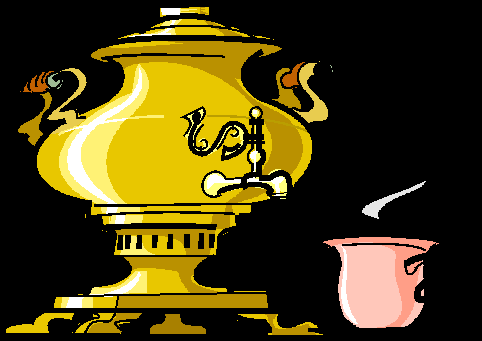
Корчагина Е.И.
Food.
In the World of Tea.
Level Intermediate
Practical - aim: To involve pupils in the process of free English communication.
To introduce additional tea vocabulary on the topic Give students practical recommendations Teach students use new information in everyday life
Teaching aim: Teach pupils find new information. Develop monological and dialogical skills. To compare tea customs and traditions of different countries: China, England. Japan, Russia, Ukraine/
Cultural aim: To teach students good manners, tea etiquette, polite attitude towards others/
Lesson material:
1Програма для загальноосвітніх навчальних закладів. Київ, Ірпінь, 2005
2. English Dictionaries., V.K. Muller , Moscow, 1971
3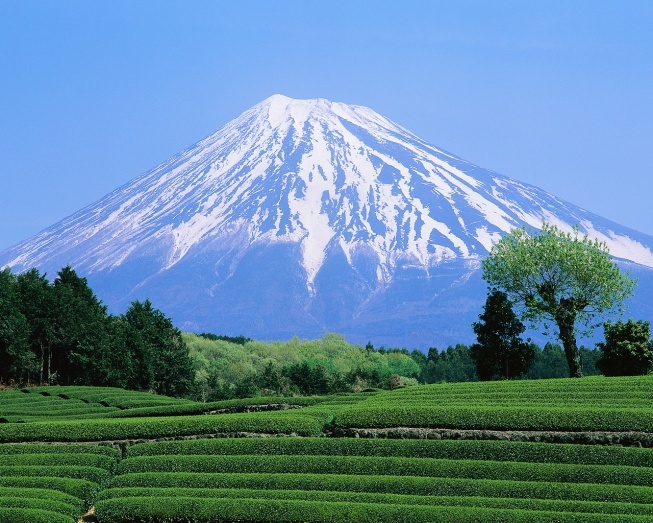 . Vocabulary cards with, new words
. Vocabulary cards with, new words
4. "English",Vebmary 2005 №7
5. Internet Site
6. "MK in Ukraine", 14,09. 2005, 14
7. "Otdohni" M 5, 2005. 9-14
8. Tea things, tea recipes.
Lesson plan
"Tea tempers the spirits and harmonises the mind, dispels lassitude and relieves fatigue, awakens thought and prevents drowsiness, lightens or leiieshes the body, and cleais the perceptive faculties"
Confucius
I. Introduction to the lesson
Today our lesson is devoted to tea. You know that the whole world uses tea as a perfect drink from the encient times. Every family has special teas for every guest and every occasion, personal teas, specialty - teas and other teas. At our lesson we shell know a lot about the history of tea in different countries, about table manners, liow to made tea, you will propose some tea recipes and so and so on. Let's stunt our training.
II. Warming- up
1) T. - What is the English for ,.. ? (Kettle, teapot, sugar, tongs). ' S.-
T, - Show all the pants of the kettle. S, - (Handle, spout, lid) T. - What is tea? S.-
2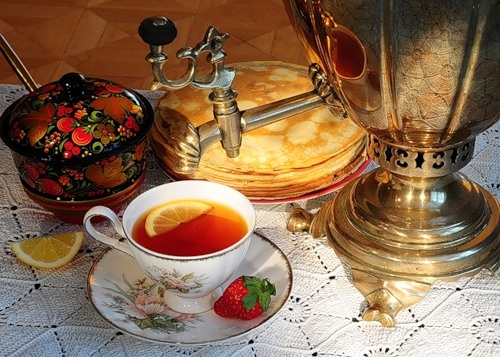 ) Working with teacher: answer the teacher's questions;
) Working with teacher: answer the teacher's questions;
a) Do you like tea or coffee?
b) Do you know countries where tea grows?
c) What sorts of tea do you know?
d) Does tea useful for people or not? e)Why?
III. Developing Speaking/
Acquamting children with new words;
- infrequent - peдкий
- shrub - kуст, кустарник
- habit - привычка, обычаи, характер произростания
smooth - очень приятный
fragrant - apоматный, благоуханный
beverage - напиток
tea plucker - c6opщик чая
The pupils read trie new words one by one, then ui choix. They write them down mto their vocabularies. The teacher may offer the pupils to explain some
IV. Speaking about Tea
T. Today our lesson is devoted to tea. Now we are going to
discuss the history of tea peculiarities of cookery in different
countries.
Your home task was to mid information about all sorts of tea,
tea traditions m making and drinking tea.
To begin with lets listen to reports prepared by our pupils
While listening them put down common and different
features of tea traditions in different countries and some tea
r ecipes
ecipes
The floor is taken by a representative from
Pi China
P2 Japan
P3 England
P4Russia
P5Ukraine
(Тексты прилагаются)
V. Tea Discussion
1) T, Have you got any questions to each other
P1 - What table manner we should observe while visiting
China?
P2- How do you like your tea?
P3 - Do you like milk in your tea?
P4 - Would you like an egg in your tea?
2) How to make perfect tea?
(The pupils in groups of three or four share their ideas Then the representatives of each group tell the rest of the class about those things which should be done to make perfect tea or everyone is going to give hie or her ideas).
VI. Say whether a statement Is true or false
1, The history of tea came to us from the Ancient China
2, In England tea was mostly known as a medical drink
3, Russian women did not drink tea during quite a long time
4, Russian Orthodox Church accepted the drink
5, Teas are very rare estate m our supermarkets
6. In cool climate of the Himalayas grows Darjeeling
7. Shrub is the Chinese variety of Darjeeling
8. There is only green sort of tea
9. Kenyan tea goes with milk perfectly
10. Tea influences perfectly on the people's health
Ключ
1 - T
2-T
3-F
4-F
5- F
6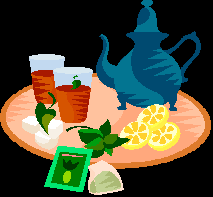 -T
-T
7-T
8-F
9-T
10-T
VII Check -up
Complete dialogue:
Green, pleasure
Do you like milk in your tea?
Would you like Russian tea?
Are you sure you wouldn't Jike some sugar?
VIII. Writing
T, Simple test: How to make a cup of tea (Maybe a group work) Making up a reerpe of your favorite type of tea (including a list of what ingredients are needed for this). Then they inform the rest of the class about those recipes they like. For example: Admiral Tea
Take a thin glass m a silver glass holder, fill it with the strongest
hot freshly braved tea, and add a sHce of lemon and three teaspoonfuls of sugar, put a bottle of cognac nearby... Sip some tea, pour in cognac to the brim, Sip some more - and pour in more cognac. When your glass m still full, but the bottle is empty - then you have true admiral tea.
IX. Questions on the lesson:
1. Where do you buy tea?
2 What do you need for tea?
3 What sorts of tea do you know in China, England?
4 Where does a tea plant grow?
5 What tea museums do you know and where are they situated? (Bramaifs museum of tea and coffee in Britain).
X. Summing- Up
Thank you so much for your discussing a problems of tea world. I hope that all of you have known many interesting things about tea, tea customs, health, tea recipes. Your job was welldone and I put you such marks:....
XI. As for your home assignment, your task is:
1) to write an instruction how to make perfect tea:
2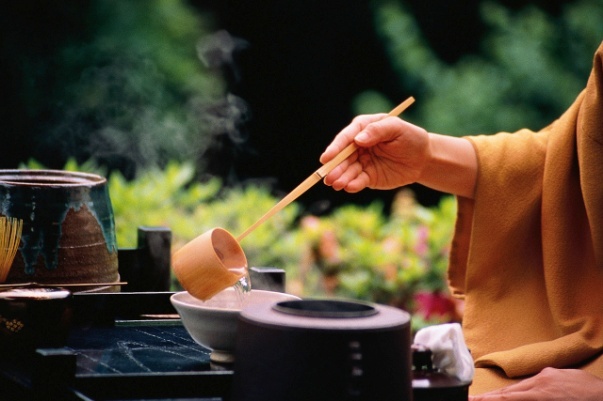 ) make up cpossword on the topic «Tea».
) make up cpossword on the topic «Tea».
Add one letter to the letter or letters on the row until you get to the longest word. Then subtract one letter at the until you com plete the puzzle.
TEA
Tea is a beverage by pouring water over dry processed tea leaves. It ranks as the most popular refreshing drink in more then any other beverage.
In 1990, about 5.5 billion pounds (2.5 billion kilograms) of dried tea were produced. India has always played a dominant role in the world tea production. Today, India produced about 1.5 billion pounds (720 million kilograms) each year. China is the second largest producer with about 1.5 billion pounds (525 million kilograms) annually. Other tea producing countries include Indonesia, Kenya, and Sri Lanka.
The tea-producing countries themselves consume over one-half of global tea crop. Great Britain imports the greatest amount of tea-about 400 million pounds (180 million kilograms) annually. On the average, about 7 pounds (3.2 kilograms) of tea are consumed per person each year in Great Britain. People in the United States consume about 0.34 kilogram of tea per person a year.
The tea plant grows in tropical and subtropical climates. The plant, an evergreen, grows quickly at low altitudes where the air is warm. The finest tea comes from elevation of 3,000 feet to 7,000 feet (900 to metres). The plant grows more slowly in cool air, adding to its flavour.
Tea plants have small, white, sweet-smelling flowers. Each flower produces three seeds that look like hazelnuts. On a tea estate or in a tea garden where tea plants are grown commercially, workers plant the seeds in a nursery bed.
Another method of cultivating tea involves planting cuttings of tea plants with desirable qualities, such as high yield or special flavour, in the bed. About a year later, when the plants are about 8 inches (20 centimetres) high, they are transplanted to the field. About 3,000 tea plants grow on 1 acre (0.4 hectare) of land.
Wild tea plants grow as high as 30 feet (9 metres). But a commercial tea plant is pruned to keep it from 3 to 4 feet (91 to 120 centimetres) high. The plant matures in three to five years and produces a flush (growth of new shoots). Each shoot consists of several leaves and a bud. At lower altitades, tea plants may grow' a flush every week. At higher 27 altitudes, a plant needs as long as two weeks to grow a flush. Tea plants produce no flushes in cold weather.
Workers called teapluckers pick the flushes off the bush by land. A plucker can harvest about 40 pounds (18 kilograms) of tea leaves a day, enough to make about 10 pounds (4.5 kilograms) of manufactured tea.
Mechanical pluckers are common in countries with flat land. These devices are tractor like machines that can harvest as many tea leaves as up to 100 manual pluckers. However, tea of higher quality is generally produced from leaves that have been hand-plucked.
T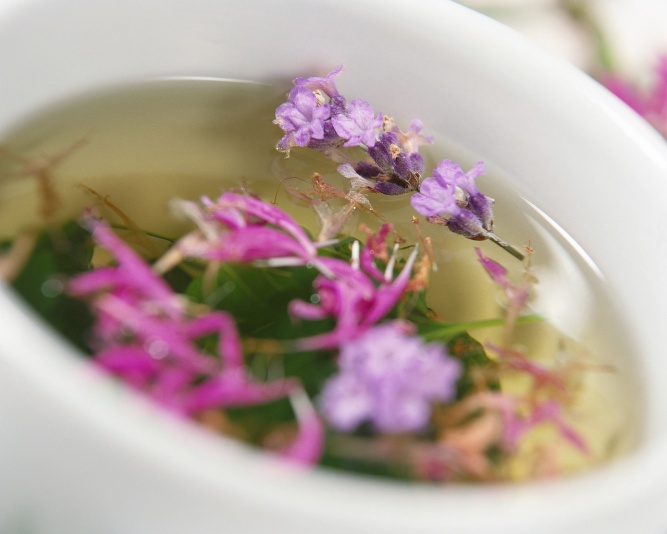 here are three main kinds of tea: (1) black, (2) green, and (3) oolong. They differ in the method used to process the leaves. The processing takes place in a factory on or near the estate. All tea-producing countries manufacture black tea. Most of the green and oolong tea comes from China, Japan, and Taiwan.
here are three main kinds of tea: (1) black, (2) green, and (3) oolong. They differ in the method used to process the leaves. The processing takes place in a factory on or near the estate. All tea-producing countries manufacture black tea. Most of the green and oolong tea comes from China, Japan, and Taiwan.
To make black tea, workers first spread the leaves on shelves called withering rocks. Air is blown over the leave s to remove excess moisture, leaving them soft and flexible. Next, the leaves are crushed between the rollers of a machine to release their flavourful juices. Then, in a fermenting room, the tea leaves change chemically under controlled humidity and temperature until they turn coppery in colour. Finally, the leaves are dried in ovens and become brownish-black.
History of tea :: Chinese tea history
I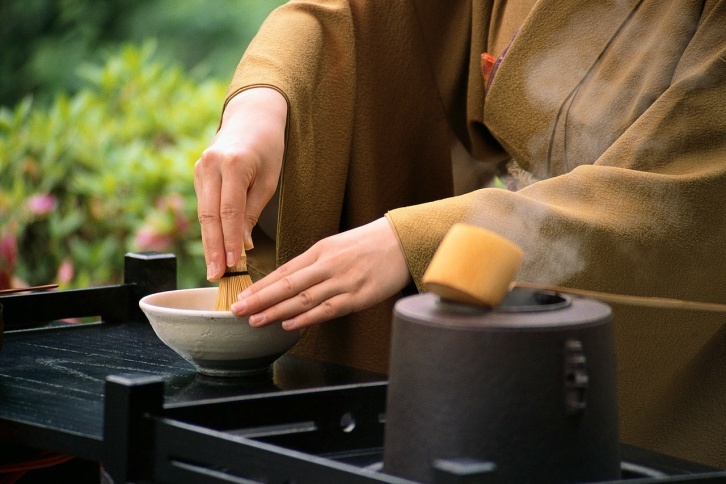 t is a sheer pleasure to speak about the history of tea. Part of this history goes far beyond the scopes of the comprehensible past and relates rather to the mythological times than to history. This means that those crumbs of legends that came to us from Ancient China can be turned into impressive narrative rich in dramatic tension but with a happy ending. It is only natural that tea dealers (and the Chinese in the first place) practice such myth-making most actively.
t is a sheer pleasure to speak about the history of tea. Part of this history goes far beyond the scopes of the comprehensible past and relates rather to the mythological times than to history. This means that those crumbs of legends that came to us from Ancient China can be turned into impressive narrative rich in dramatic tension but with a happy ending. It is only natural that tea dealers (and the Chinese in the first place) practice such myth-making most actively.
The Chinese tea history (and the tea history in general) actually starts with mythology. According to one version, more than five thousand years ago, a wonderful creature with animal body parts named Shen Nung - the first emperor of China and the first farmer - wandered in Ancient China, tasted different things, and then, taking advantage of his belly being transparent, studied the processes which arose in his abdomen. During one of such experiments he found out that leaves of tea-trees brewed in water are tasty and wholesome. For both his transparent and many other - not that transparent - stomachs.
According to another ersion, the first tea tree grew from the eyelids which had been cut off in rage by one Buddhist monk who fell asleep during his meditation.
The invigorative effect of tea is often explained by this meditative origin. The first record of tea in China dates tjack to 770 BC and does not allude to any romantic tales about either torn-out eyelids or ransparent bellies.
For us, tea consumers, the evolution of tea drinking may be of primary concern in the Chinese tea history - they first drank it not the way we drink it today. The Chinese experimented a lot with the use of tea until
about the 8th century AD - they drank it salted, made soup of it, boiled it (instead of brewing) - to cut a long story short, for several centuries China was looking for an optimal way to use tea. Finally this way was found.
Salt was excluded from tea recipes in about the 9 or 10 century. At that time tea (green tea) was ground into powder and then frothed in water. The color of the froth was considered nearly the main value of the drink. This very way of tea making was the first to be spread almost all over China. The Japanese also adopted this tea application which they are still practicing now with only a few alterations. Who knows, but for the Mongols, this powdered frothed tea might have been adopted by the Europeans just as well.
In 1206 nomadic tribes invaded China from the North and dwelled there until 1368. This simple steppe people had no need for Chinese tea ceremonies, and froth tea tradition of China fell into decay once and for all.
During the Ming dynasty (1368-1644) another tea tradition evoked in its place - brewing of dry tea leaves in boiled or hot water - the way of tea making we are all accustomed to. It was adopted by the Europeans and determined the development of all other tea traditions, except the Japanese one.
Since the 17 century the Chinese tea tradition has been Inseparably linked with foreign trade. A large number of teas, tea accessories, and tea rules have been created to satisfy European tastes. The analogy may be not quite accurate but the tea tradition in China resembles the Russian matreshkas, which are not of high demand in the country - if any, but foreigners buy it willingly.
N evertheless, it was in the 17th-19th centuries that the wonderful variety of Chinese teas that makes us happy today was formed. Export of some teas was banned and this excited European interest. However, the basis of the Chinese tea tradition was formed not by the elite but ordinary teas for masses (green as well as black), teas for the many-million population of the country and for the quite numerous European consumers.
evertheless, it was in the 17th-19th centuries that the wonderful variety of Chinese teas that makes us happy today was formed. Export of some teas was banned and this excited European interest. However, the basis of the Chinese tea tradition was formed not by the elite but ordinary teas for masses (green as well as black), teas for the many-million population of the country and for the quite numerous European consumers.
Everything had changed with the development of tea production in India and Ceylon - the Chinese tea industry was based primarily on handicraft and could not compete with an industry set up on European methods. Indeed, nor was it a collapse; China continued selling tea, and it was a good tea, but the Golden Age of Chinese tea seemed to be lost forever. The situation was aggravated by the Cultural Revolution in China, when tea was proclaimed detrimental luxury.
Luckily for tea, the ideology did not kill tradesmen in the Chinese. When in the West the fashion for everything oriental began (about 30 years ago) the Chinese tea tradition, like Phoenix, rose from the ashes. The European demand for elite teas of high quality dressed with fine stories about dead beauties and golden dragons was satisfied instantly by the Chinese. Moreover, they promptly quilted an export tea ceremony "gongfu-cha" ('kung-fu-cha') - based mostly on the Taiwanese tea culture. centuries (12'n to 16xn) aristocratic tea drinking had become an art full of complexities, stytizations, and a secret but easy-to-guess philosophic meaning. Tea tournaments were of great popularity at that time, where different teas were' served to guests, who were to make out the variety of tea and the place where it was cultivated.
T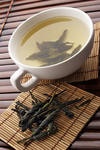 ea accessories became a cult: specially trained experts selected them, they could be a gift to redeem any fault, and there is a story of a samurai who broke his favorite tea bowl before committing seppuku - so that the enemy would not get it. A new tea ceremony, called Yinkan', got spread; during the ceremony tea was drunk while taking a bath. In brief, all these tea luxuries exasperated Japanese public opinion. Citizens and peasants, supported by progressive clergymen, not only organized several large-scale riots but also laid foundation of new tea aesthetics.
ea accessories became a cult: specially trained experts selected them, they could be a gift to redeem any fault, and there is a story of a samurai who broke his favorite tea bowl before committing seppuku - so that the enemy would not get it. A new tea ceremony, called Yinkan', got spread; during the ceremony tea was drunk while taking a bath. In brief, all these tea luxuries exasperated Japanese public opinion. Citizens and peasants, supported by progressive clergymen, not only organized several large-scale riots but also laid foundation of new tea aesthetics.
One of the founders of this aesthetics was Murata Shuko. At the close of the 15th century Murata develops Chanoyu ('hot water for tea') - a Japanese tea ceremony based on principles of naturalness and simplicity. Sen Rikyu was the one who brought the ceremony to perfection.
S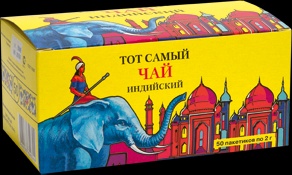 en Rikyu (1520-1591) is still considered the greatest tea master of Japan - the 'golden tea room1, which he built, is regarded a model tea room, and the suicide he committed is penetrated with tragic aesthetics peculiar to the age of samurai. Sen Rikyu was one of the organizers of Kitano Shrine Great Tea Gathering {Oct., 1587) made by Hideyoshi (a military leader who accomplished the union of Japan). Five thousand people took part in the ceremony - and this great event became a swan song of aristocratic tea drinking in Japan. According to one of the versions, Sen Rikyu committed suicide as a protest - so much all that was happening was against his aesthetic principles. But since the Gathering took place four years before Rikyu actually claimed his own life, most probably, it is but a beautiful Jegend...
en Rikyu (1520-1591) is still considered the greatest tea master of Japan - the 'golden tea room1, which he built, is regarded a model tea room, and the suicide he committed is penetrated with tragic aesthetics peculiar to the age of samurai. Sen Rikyu was one of the organizers of Kitano Shrine Great Tea Gathering {Oct., 1587) made by Hideyoshi (a military leader who accomplished the union of Japan). Five thousand people took part in the ceremony - and this great event became a swan song of aristocratic tea drinking in Japan. According to one of the versions, Sen Rikyu committed suicide as a protest - so much all that was happening was against his aesthetic principles. But since the Gathering took place four years before Rikyu actually claimed his own life, most probably, it is but a beautiful Jegend...
Sen Rikyu's descendants continued his work. Great-grandsons with names funny for our -Russian - ear (Sen Sosa, Sen Soshu, and Sen Soshitstr) created three tea schools, which exist even nowadays In Moscow, there is an office of one of them (Urasenke).
Since the middle of the 19th century the Japanese have been trying to adapt their tea tradition to Western culture and at the same time to explain to us the secret meaning of the Japanese tea aesthetics. In 1911, in New York, The Book of Tea' by Okakuro Kakuso was published, The book, which aimed at communicating eastern aesthetics to western readers, produced a strange effect - it began to be cited as an example of Japanese oddities.
S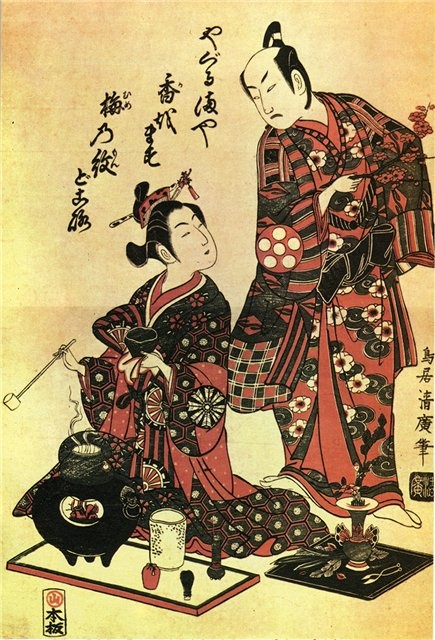 peaking about the Japanese tea history, one can also mention Yasunari Kawabata, who revealed the soul of Japan and the Japanese tea ceremony to the Western World, got a Nobel Prize for his Thousand Cranes1, and committed suicide in 1972. But this is not a tea story already...
peaking about the Japanese tea history, one can also mention Yasunari Kawabata, who revealed the soul of Japan and the Japanese tea ceremony to the Western World, got a Nobel Prize for his Thousand Cranes1, and committed suicide in 1972. But this is not a tea story already...
That is all. Just one more remark: in Japan, they drink not only powdered tea and do it not only through tea ceremonies.
Accompanied by liberal oriental aesthetics and simple philosophy, this ceremony as well as the entire Chinese tea tradition (which in its present state is not more than 50 years old) enchants student-girls, leads thoughtful young men into reverie, and gives some odd fascination to businessmen of all levels. It may sound funny, but in Moscow, it is much easier to have a Chinese tea ceremony than to find some English Afternoon tea or a traditional Russian tea...
T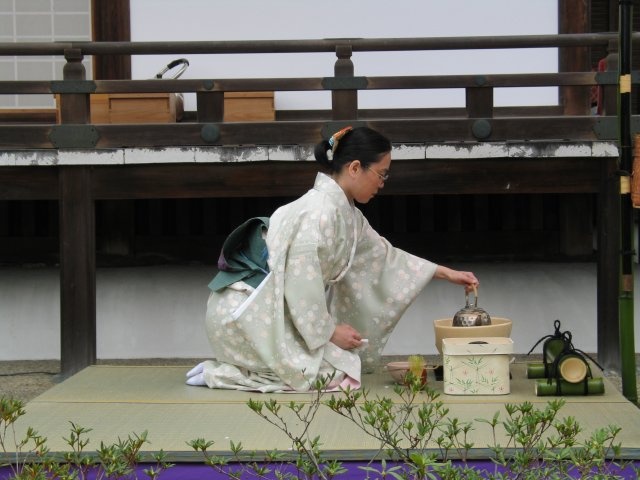 hat is all about the Chinese tea history. Not to be suspected in having sold myself to the West to defame the good Chinese tea, I confess that I myself do drink Chinese tea almost every day and love it a lot, just as well as I love the entire Chinese tea tradition in all its manifestations. But this love doesn't prevent me from laughing heartily...
hat is all about the Chinese tea history. Not to be suspected in having sold myself to the West to defame the good Chinese tea, I confess that I myself do drink Chinese tea almost every day and love it a lot, just as well as I love the entire Chinese tea tradition in all its manifestations. But this love doesn't prevent me from laughing heartily...


